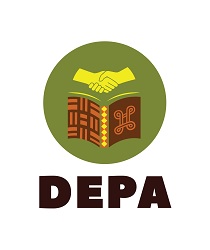The Power of Storytelling
The power of storytelling is immense. It can captivate audiences, evoke emotions, and most importantly, bridge gaps. Read on to learn about how a young partipant's experience at the DEPA storytelling workshop helped them settle a family dispute.
A Workshop on Storytelling for Peace-Making
During the storytelling workshop, we heard a story about a land dispute that escalated into violence. This story was not just narrated, but also analyzed and discussed to identify key elements. This led to us sharing our own stories and sparked interest among the participants, prompting them to come up with their own narratives related to violence.
Applying Workshop Learnings to Real-Life Conflicts
The knowledge and skills gained from the workshop were put to the test when I encountered a similar incident between two male relatives. Their conflict, rooted in a land dispute, had not only strained their relationship but had also affected their children. The tension was palpable, and their unwillingness to communicate was evident.
Intervening in a Family Conflict
Being neutral, I decided to intervene. I approached each uncle separately, probing them about the issue. Initially, they were hesitant, especially the first uncle who was sceptical due to my gender. However, after some persuasion, they opened up, revealing a story similar to the one my grandmother used to narrate.
Resolving the Conflict through Dialogue
To resolve the conflict, I involved another uncle from a different village, who spoke to them individually. I also appealed to their conscience, urging them to let go of their grievances. After much effort, they agreed to reconcile, and I was able to reunite the family.
The Impact of Storytelling on Conflict Resolution
This experience reaffirmed the power of storytelling. By narrating a similar story, I was able to resonate with the uncles, making them realize the futility of their conflict. The story served as a mirror, reflecting the potential consequences of their actions, thereby prompting them to resolve their differences.
Conclusion: Storytelling as a Tool for Harmony
In conclusion, storytelling is a powerful tool that can bridge conflict gaps. It allows individuals to see from different perspectives, fostering understanding and empathy. As peace-makers, we must harness this power to resolve conflicts and promote harmony.

